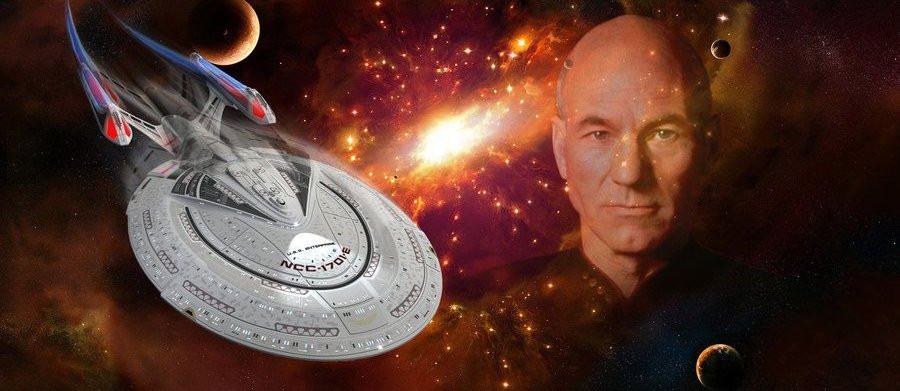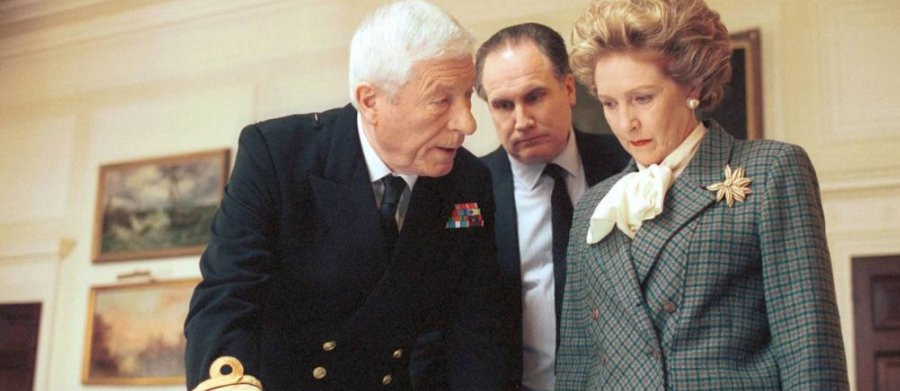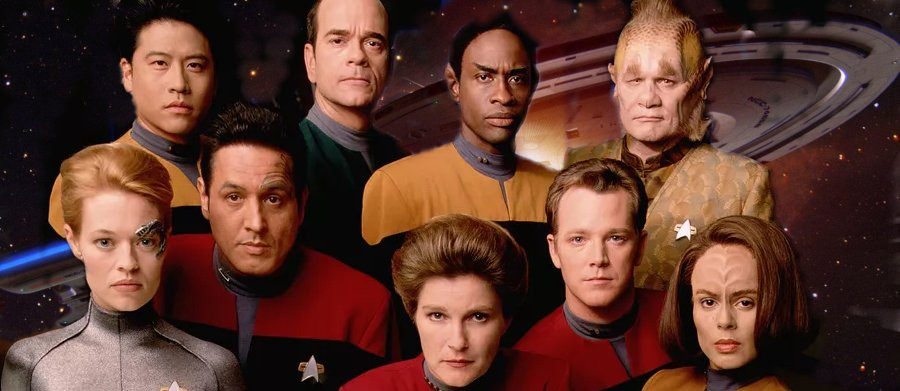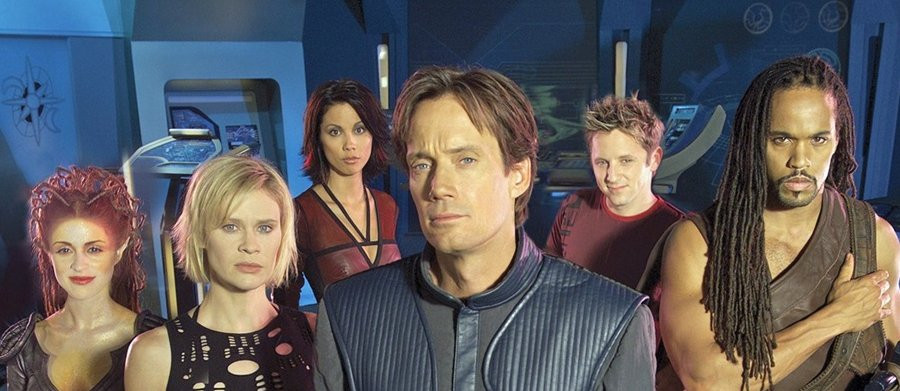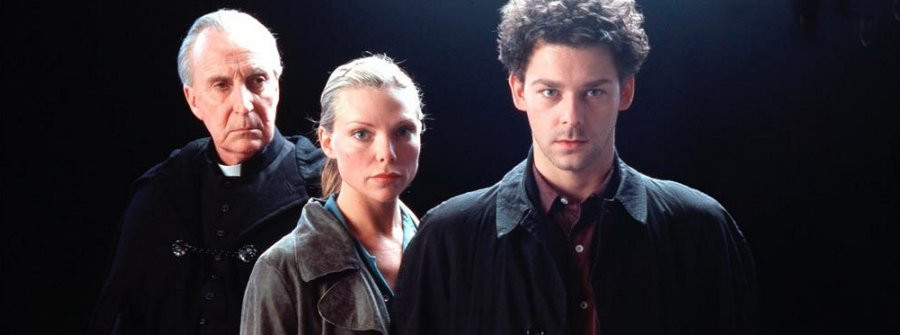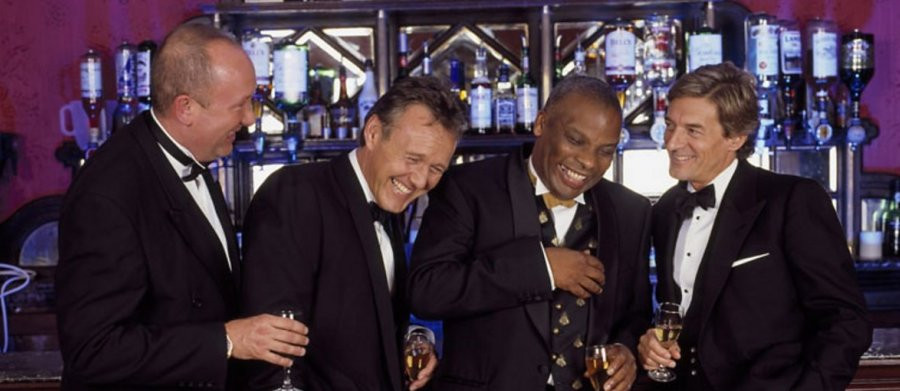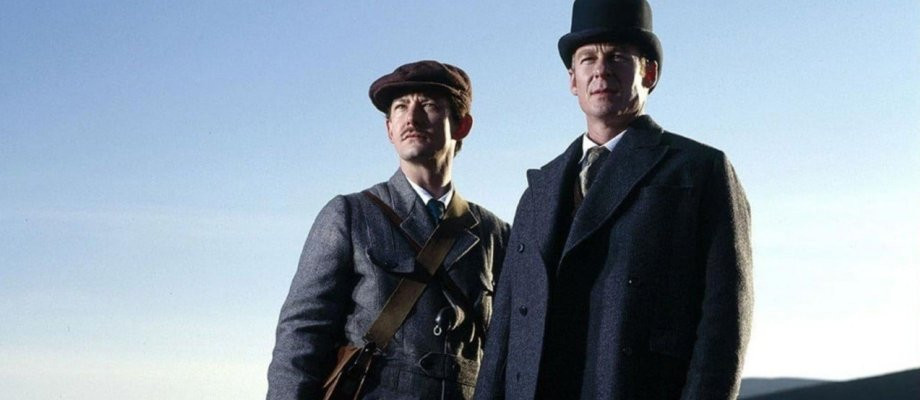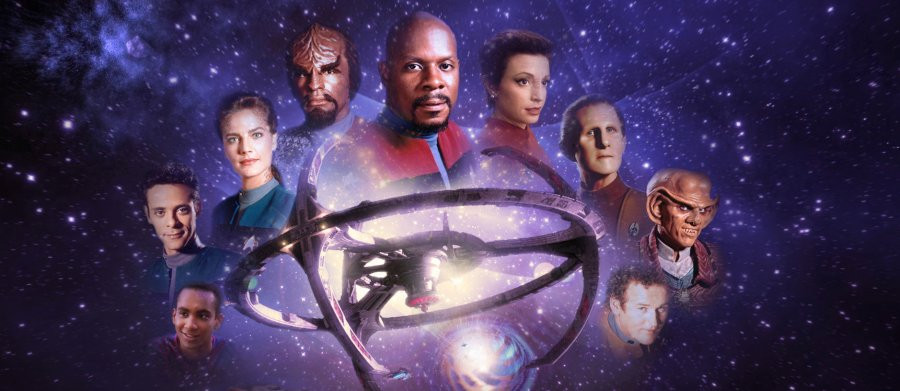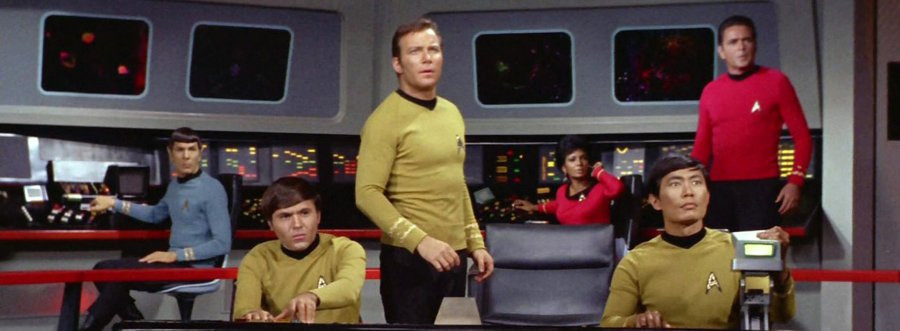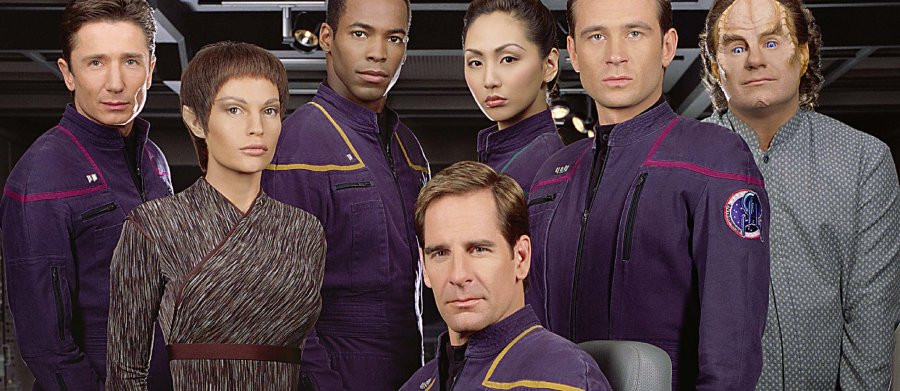
Star Trek: Enterprise
2002 - United StatesReview: Daniel Tessier
As Star Trek: Voyager neared its completion, the creative team, led by Rick Berman and Brannon Braga, sought to find a way to revitalise the franchise. There was never any doubt that Star Trek would continue in some form or another, but dropping ratings and fan criticism for Voyager made it clear that something had to change. After fourteen years and twenty-one seasons of Star Trek broadcast during its “Renaissance” period, and while the franchise was still undeniably popular, it had begun to sag under the weight of its own continuity. After the solid run of the Next Generation era, a change in style and setting was in order.
With that in mind, the creative team pulled the franchise back through time to tell a story that worked both as a prequel to Star Trek: The Original Series and a projection forward from the present day. The series was set a mere 150 years into the future, the middle of the twenty-second century, over a century before the original series. This was a time before the United Federation of Planets, when humans were still the new kids on the block, galactically speaking. The series also spun off, in a way, from the successful 1996 film Star Trek: First Contact, which saw the Vulcans make contact with Earth in the twenty-first century. As such, the prequel would see the Vulcans shepherding humanity towards the stars.
The series was originally titled simply Enterprise, a clear attempt to separate it from the series that had come before by eschewing the Star Trek prefix. Yet the name Enterprise was chosen as the word most indelibly linked with Star Trek. This wouldn't last, with the series being retitled Star Trek: Enterprise from the early third season onwards due to Paramount wanting to reconnect with the franchise's core fanbase.
This change in title reflects how Enterprise, like Voyager before it, wasn't the radical fresh start for the franchise it was promised to be. Berman's initial idea was that the first season would be set entirely on Earth, tracking the construction of the starship Enterprise, the recruitment of the crew and the political challenges of dealing with the Vulcans, before launching into space at the season's close. This was too far removed from the Star Trek template for the powers behind the series, so it was rapidly returned to a more traditional space exploration format.
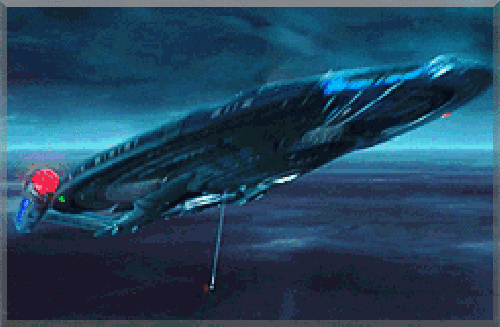
The series was, like most iterations of the franchise before it, centred around the missions of a starship, the eponymous Enterprise NX-01, the apparent namesake for Kirk's later USS Enterprise. Captain of the ship was Jonathan Archer, the son of the man who designed the warp five engine that would propel the Enterprise beyond the limits of previous exploration. The only actor ever considered for the role was Scott Bakula, a hugely popular actor with sci-fi fans for his starring role in Quantum Leap. Captain Archer wasn't quite the adorably loveable hero that Dr. Sam Beckett was, but he was still the most down-to-earth and immediately likeable captain to lead a Star Trek series.
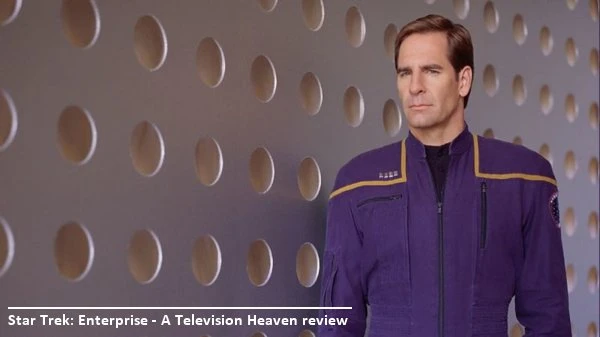
Second-in-command was T'Pol, a Vulcan officer assigned to Enterprise as both an observer and science specialist. The last main actor to be cast, Jolene Blalock (Jason and the Argonauts, The Diamond Hunters) portrayed T'Pol with remarkable skill and subtlety. While Blalock provided some eye candy for the viewers, dressed in a very figure-hugging catsuit rather than the Starfleet uniform worn by most of the cast, she was also one of the most talented members of the cast, knocking spots off most of those around her, and managing to portray the deeply repressed emotions of her character while maintaining her outwardly logical persona. The comparisons with Jeri Ryan's role as Seven of Nine on Voyager are obvious, and like her, Blalock proved to be one of the best elements of the series.
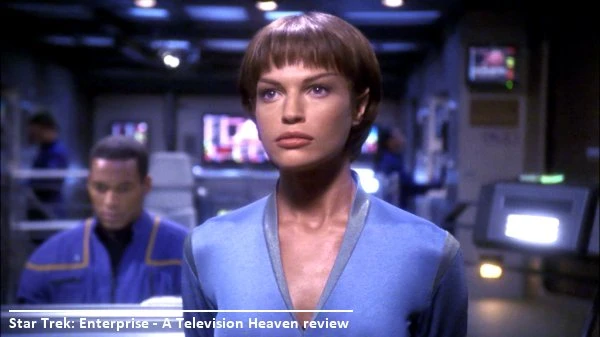
Completing the central trio of the series was Conner Trinneer (The Purge, American Made) as Charles Tucker III – aka Trip – the ship's young but brilliant chief engineer. A long-time friend of Captain Archer, Trip provided the main crew with a heartfelt, rough-hewn but charming character, whose Southern States drawl only encouraged comparisons with Dr. McCoy from the original Star Trek. Archer, T'Pol and Trip were a clear and effective recreation of Kirk, Spock and McCoy, still the most popular central characters of the franchise, with the captain balancing the emotional and moral advice from his friend with the scientific and rational advice of his first officer. Having wanted to return to a character-driven format, the showrunners made a good start with their central trio. An interesting element of this was that both Archer and Trip mistrusted the Vulcans, with Archer in particular blaming them for holding back his father's research and humanity's advancement. T'Pol, being the representative of this oversight, suffered a fractious relationship with the two officers during the series' first two seasons as she slowly earned their trust.
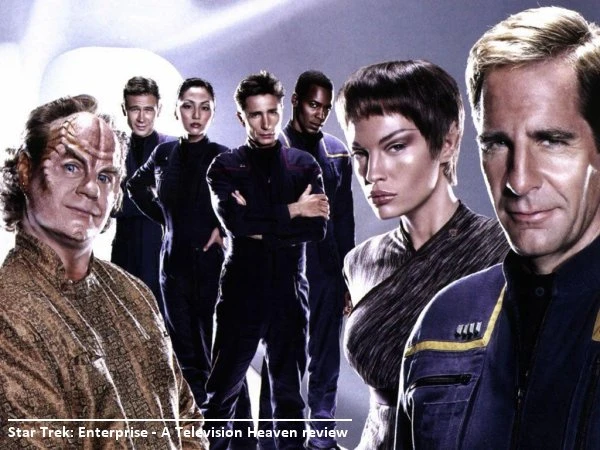
The remaining characters were qualified successes. John Billingsley (The Man From Earth, The Nine) played the second alien on the crew, Dr. Phlox, an eccentric and amiable physician from the star system Denobula Triaxa. Representing an alien species newly created for Enterprise, Phlox provided a blank slate, and while there were initial fears he would become another Neelix, strong writing and a layered performance from Billingsley made him one of the stronger characters. Less successful were Hoshi, Mayweather and Reed, who completed the bridge crew. Hoshi Sato (Linda Park: Crash, Women's Murder Club) was the ship's linguistic specialist, an update of Uhura's communications officer role, and an essential crewmember in these early days before the miraculous universal translator was invented. (Hoshi, of course, worked on that herself, and before long the crew could understand everyone.) A nervous explorer not suited to space travel, Hoshi rarely got much development beyond gradually becoming braver as the series developed.
Malcolm Reed (Dominic Keating: Desmond's, The Immortal, Heroes) was the uptight, stereotypically British tactical officer. While entertainingly keen on blowing things up with the Enterprise's advanced new weapons, Reed was tricky to get a hang of and the writers seemed to struggle with how to use him, perhaps because the character was deliberately conceived as a closed book. The least developed was Travis Mayweather (Anthony Montgomery: Single Ladies, Popular), the ship's helmsman who had grown up in space on board a warp two freighter. Although there were some tricky family dynamics for him as he occasionally encountered the freighter community, Montgomery rarely got meaty material on the series.
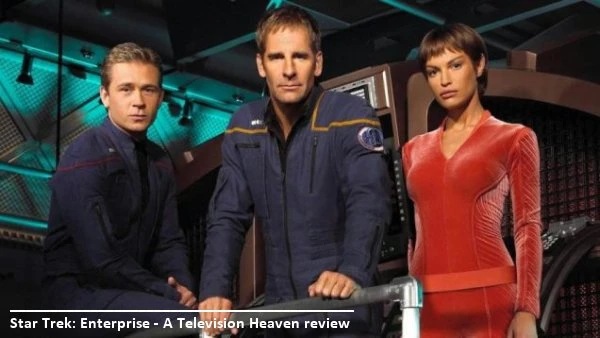
Enterprise immediately looked and sounded different from the Next Generation era series, which were set over two centuries later. The series opener, “Broken Bow,” is one of the strongest of the franchise, beginning with a Klingon running for life from alien pursuers before being gunned downed by the frightened owner of the farm his ship crashed on. This then launches into the title sequence, a beautiful montage of ships and instruments of exploration, leading from early ocean voyages through to contemporary missions and beyond. The sequence included footage of the space shuttle Enterprise, a cute touch. In reality, the shuttle was named for Kirk's starship Enterprise, supposedly named for Archer's, supposedly itself named for the shuttle. The sequence went on to show footage of the Mars rover Sojourner, taken by the Pathfinder lander on the red planet itself, the first time extraterrestrial footage was used on a television show. Fictional spacecraft then brought the title sequence up to date with the Enterprise NX-01 itself.
The most immediate difference for Star Trek fans, though, was the theme tune. Unlike the usual orchestral manoeuvres, Enterprise was introduced with Russell Watson's soft rock ballad “Faith of the Heart.” While the majority of fans disliked the song – even petitioning for its removal – there are those of us who find it very apt and rather uplifting (so there!)
The visual differences continued into the action itself, with the interior of the Enterprise being more simplistic and cramped compared to the starships of later centuries, with more physical buttons in place of the touch screens of the 24th century series. The crew wore practical, boilersuit-styled uniforms that looked more like the sort of thing someone might actually wear when working in such an environment, while even their off duty clothes were more recognisable, with t-shirts, jeans and caps common. The admiral's uniform even included a tie, an item of clothing apparently extinct by The Next Generation's time. The presentation of a more primitive starship compared to the later Enterprises and Voyager presented a challenge to designers. It had to appear less advanced than even Kirk's Enterprise, which by the 21st century looked absurdly basic, while even the technology on Voyager was looking dated by the time the series ended. Finding a balance between the old and new was tricky, but one that the series mostly pulled off.
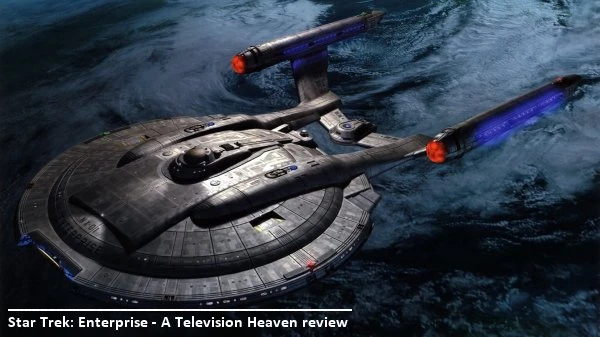
This balance, of course, extended to the storylines. Enterprise was in the difficult position of trying to move both forwards and backwards, to appeal to fans and new viewers, to try new things but also honour what came before. “Meet Kirk's childhood hero,” said promotional images of Archer, but if he was so hot, why did Kirk never mention him? Kirk's Enterprise was known to be the first Federation starship of the name, an issue circumvented by having Archer work for Earth's Starfleet before the Federation was even founded, yet its omission from the future history seen in previous series bothered fans. The writers were careful to work within the confines of continuity for the most part, with the series presenting first contact with important alien races such as the Andorians, Tellarites, Klingons and Romulans (who never met any human characters face-to-face, carefully preserving continuity with the original series). On the other hand, some aliens such as the Ferengi and Borg, who were explicitly from distant regions of the galaxy and first encountered in The Next Generation, also turned up, and simply not using their names in front of the captain didn't really cover it up.
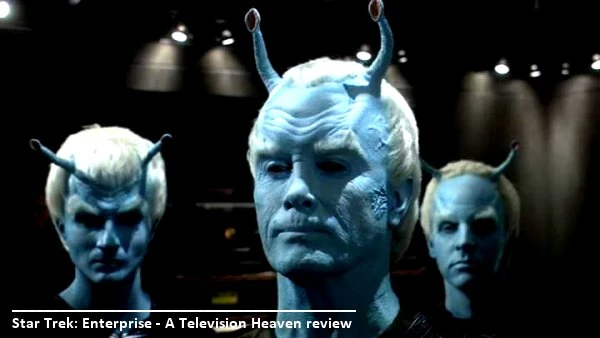
Of course, to the general viewer, such matters are not a concern. However, Enterprise failed to live up to the bold new direction it was billed as, and its differences to earlier series were surface trappings. The episodes were told in the same tried-and-tested style that had been used hundreds of times before, and many would have made perfectly serviceable episodes of Voyagerwith a few tweaked details. Many familiar faces and names appeared on the screen, with several stars of The Next Generation and Voyager working behind the cameras as director (Roxann Dawson, who played B'Elanna Torres, helmed ten episodes of Enterprise). Actors such as Rene Auberjonois (Odo on Star Trek: Deep Space Nine) and Jeffrey Combs (various roles in both DS9and Voyager) appeared as guests. This was not, in itself, a bad thing – Combs in particular was a hit as the recurring character Shran of the Andorian Guard – but it cemented the feeling that Enterprisewas more of the same.
On the other hand, the creative team did create some interesting new material for the series. From the first episode, a time-travelling conflict known as the Temporal Cold War wove its way through the story. This involved a new alien race, the Suliban – the name a deliberate reference to the Taliban – some of whom worked as terrorists and operatives for a mysterious overseer from the distance future (whose identity was never revealed). On the opposite side were Federation agents from around the year 3000, far beyond the future of even Voyager. Other factions, both new and recognisable, made themselves known as the series progressed.
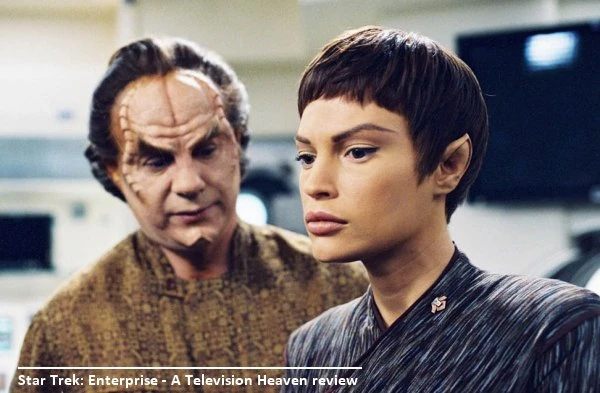
The end of the second season saw ratings drop and cancellation was threatened, necessitating a change in direction. A year-and-a-half after the catastrophic 9/11 attack, Star Trek began its own war on terror in “The Expanse” when a previously unknown alien civilisation, the Xindi, launched an unprovoked attack on the Earth, killing millions. The Enterprise's mission was changed and Archer assigned to lead the ship into a mysterious and deadly region of space to track down the source of the attack. This led to a year-long arc that ran through the third season, seeing Archer and his crew driven to new extremes as they searched for the Xindi. Archer became a harder, more resolute character, while T'Pol was driven to more emotional extremes by the effects of the Expanse. Trip became depressed due to the death of his sister in the attack, but their mutual struggles led to he and T'Pol becoming closer and eventually forming an unlikely but believable relationship. The Xindi themselves were an inspired creation, formed from multiple alien species from the same planet, and their rich and varied designs were more interesting than the usual rubber-faced humanoids that populate the galaxy. The plot tied into the Temporal Cold War arc and the episodes themselves were more action-oriented and violent than previously.
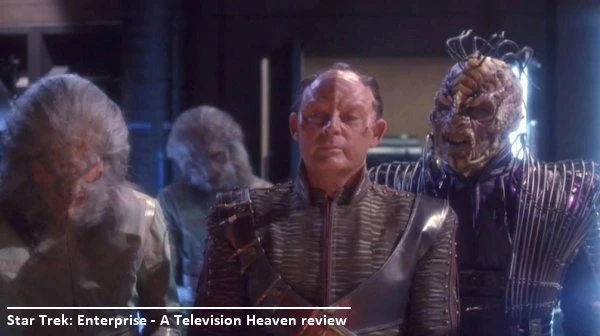
This wasn't enough to save the series' dipping ratings, so for the fourth season, another approach was taken. Manny Coto, a fine writer who came onto the staff during the third season, took over as sole showrunner. Seemingly aware that Enterprise's days were numbered, Coto began to make the show for the hardcore fans, and injected a lot of fun into the series while he was at it. To save money, stand-alone episodes were reduced with two- and three-part stories becoming the norm, allowing more episodes to be made with the same sets and cast. The series pushed towards the founding of the Federation, with major plots concerning the Vulcans, Andorians and Tellarites, all destined to found the alliance with Earth. The Vulcans had, from the beginning of Enterprise, been rather different to those of Kirk or Picard's time – more duplicitous and warlike. A three-part story featuring T'Pau, who a century or so later would be High Priestess of Vulcan in the original series episode “Amok Time,” saw the Vulcans confront the aggressive elements of their society. (T'Pau, here played by Kara Zediker, was almost Blalock's character, before the showrunners decided to create a new Vulcan character.) Attacks by the Romulans, intended to drive the four civilisations apart, instead pulled them together against their common foe. Another trilogy saw genetic supermen run amok, in a homage to the film Star Trek II: The Wrath of Khan, and featured Brent Spiner as a precursor to his character Data from The Next Generation. Elements such as the green-skinned piratical Orions and the warlike Mirror Universe featured, and we even learned why the Klingons on the original series looked different to their knobbly-headed brethren in the rest of the franchise.
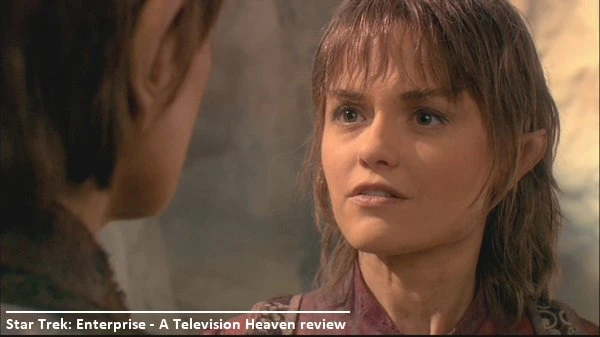
The season looked to end on a hopeful note, with xenophobic elements on Earth defeated and the beginnings of the alliance that would lead to the Federation in good health. The final episode, however, was a resounding failure. “These are the Voyages” was an episode of The Next Generation in all but name, with Commander Riker (Jonathan Frakes) and Counsellor Troi (Marina Sirtis) viewing the events of the Federation's founding on the holodeck. Intended by the writers as a “Valentine's letter to the fans,” the finale instead alienated everyone still watching, who felt it was an insult to the regular cast, who by all accounts, felt the same.
In spite of showing the apparent end of Enterprise, the fourth season wasn't intended to be the last. Plans were afoot for a fifth season, which would have featured the long-spoken-of war with the Romulans and more fan-pleasing inclusions, but ratings had dipped below crisis point. Enterprise was cancelled, even as scripts for the fifth season were being actively worked on. Russell T. Davies, working on the first series of the revived Doctor Who at the BBC, had even made enquiries about producing a crossover. (Whether such a thing would ever have been possible is another matter).
The lesser episodes of Enterprise are dull, overly talky affairs that rely on technobabble and simple moral dilemmas. However, the very same is true of the always-popular The Next Generation. Amongst them are some truly fine episodes. “Broken Bow” is an action-packed, well-written opener. “Silent Enemy” in the first season depicts a genuinely unsettling encounter with an unfathomable alien race. Season two's “Dead Stop” is another creepy story, while “Carbon Creek” is a sweet tale of T'Pol's great-grandmother, who was allegedly on Earth in the fifties. “Future Tense” hots up the Temporal War with the appearance of a ship that's bigger on the inside, while “Regeneration,” with its anachronistic adventure with the Borg, is thrilling.
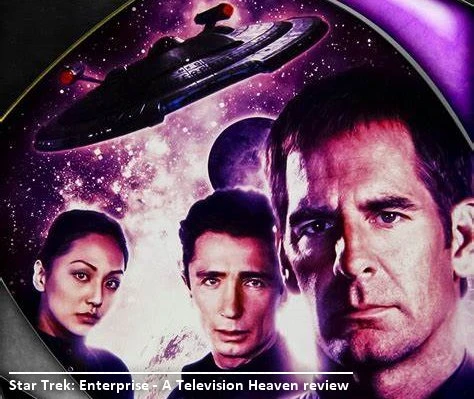
Season three gave us some real moral quandaries, with episodes such as “Anomaly” and “Similitude” seeing Archer making drastic decisions in the name of the greater good. The rollicking time travel adventure “Storm Front” opened season four, which included such as gems as the possession episode “Observer Effect.” One thing Enterprise excelled at was stories that made space travel feel scary and the unknown threatening. https://televisionheaven.co.uk/reviews/doctor-who, and even its middling episodes are easily watchable. Perhaps its biggest sin is that it's another missed opportunity for a new kind of Star Trek. At the end of the day, after eighteen years of consistent broadcast, franchise fatigue set in and Enterprise was unable to keep Star Trek on the air. It would be four years before the franchise returned with a cinematic reboot which would finally shake it up, and another eight before the second television revival began with Star Trek: Discovery. In its own small ways, though, Enterprise has influenced both Discovery and the new Star Trek movies, enriching the future history they continue to build on.
About the Writer of this article, Daniel Tessier
Dan describes himself as a geek. Skinny white guy. Older than he looks. Younger than he feels. Reads, watches, plays and writes. Has been compared to the third, fourth, fifth, sixth, seventh, eighth, tenth, eleventh and twelfth Doctors, and the Dream Lord. Plus Dr. Smith from 'Lost in Space.' He has also had a short story published in Master Pieces: Misadventures in Space and Time a charity anthology about the renegade Time Lord.
Dan's web page can be here: Immaterial
Published on August 8th, 2020. Written by Daniel Tessier for Television Heaven.


